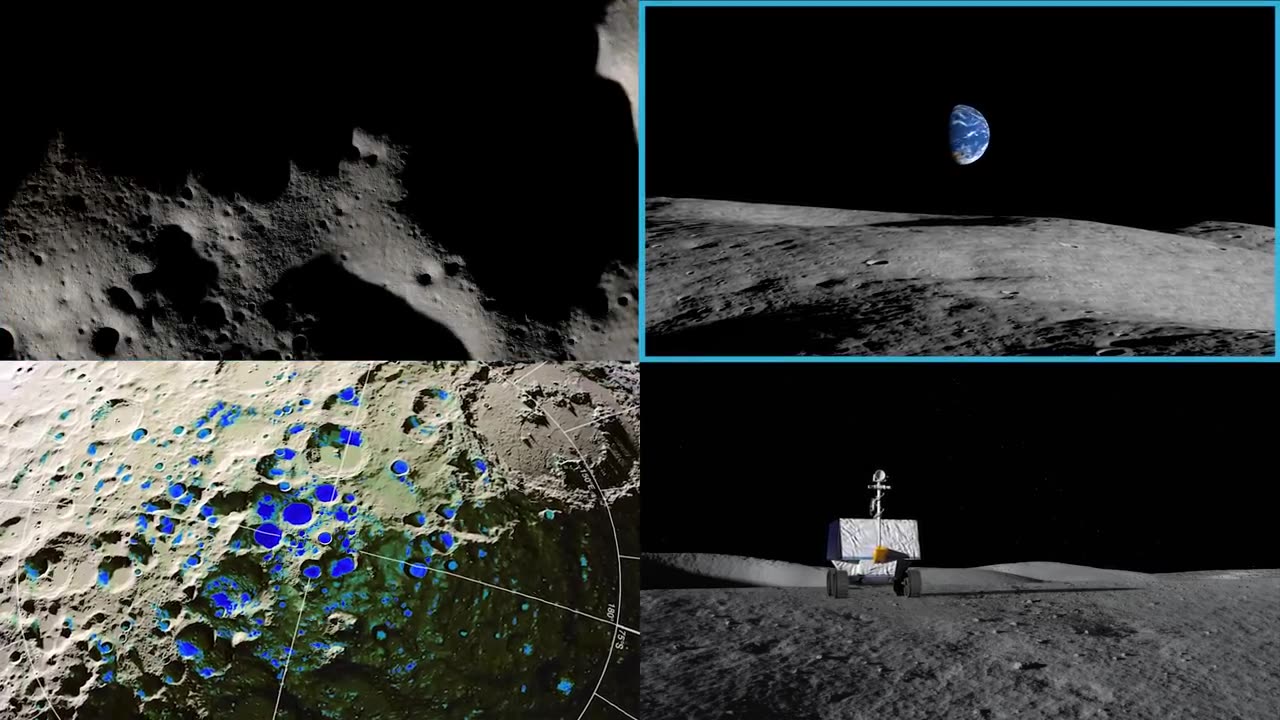Premium Only Content

Tour of NASA Moon /sabaishaq
The Moon, Earth's only natural satellite, has long been a source of fascination and exploration for humanity. Located approximately 238,855 miles (384,400 kilometers) from Earth, the Moon is a barren, airless world with a unique and desolate beauty.
The Moon's surface is marked by a stark contrast between its two main regions: the lunar highlands and the lunar maria. The highlands are rugged and heavily cratered, showcasing the scars of billions of years of meteoroid impacts. In contrast, the maria are vast, flat plains formed by ancient volcanic activity, now frozen in time.
One of the Moon's most prominent features is its lack of atmosphere. This means there is no weather, no air to breathe, and extreme temperature variations between day and night. The Moon's surface can reach scorching temperatures of over 250 degrees Fahrenheit (127 degrees Celsius) during the lunar day and plunge to frigid lows of -290 degrees Fahrenheit (-179 degrees Celsius) at night.
Despite its harsh conditions, the Moon has played a pivotal role in human history and space exploration. It served as the backdrop for the historic Apollo missions in the 1960s and 1970s, when astronauts first set foot on its surface. In recent years, NASA and other space agencies have been planning for a return to the Moon, with the Artemis program aiming to send astronauts back to our celestial neighbor to establish a sustainable lunar presence.
The Moon continues to be a source of scientific discovery, serving as a natural laboratory for studying planetary processes and the early history of our solar system. Its proximity and familiarity make it a crucial stepping stone for future deep space exploration missions, including those aiming for Mars and beyond. The Moon, with its mysteries and potential, remains a symbol of human ingenuity and the limitless possibilities of space exploration.#sabaishaq
-
 13:43
13:43
Cooking with Gruel
2 days agoCreamy Saffron Risotto
106K20 -
 18:38
18:38
DeVory Darkins
1 day ago $30.08 earnedTrump Makes HUGE Announcement that may spark GOP Battle
91.8K84 -
 2:13:05
2:13:05
The Nerd Realm
15 hours ago $7.45 earnedNew Years Eve! Fortnite Hunters w/ YOU! Creator Code: NERDREALM
73.1K5 -
 11:04:44
11:04:44
FusedAegisTV
1 day agoNYE Eve! - 2025 Incoming 🎉 - 12hr Variety Stream!
136K7 -
 1:18:52
1:18:52
Awaken With JP
18 hours agoSomehow The World DIDN’T End This Year! - LIES Ep 72
170K93 -
 1:19:34
1:19:34
Michael Franzese
16 hours agoWhat 2024 Taught Us About the Future?
135K33 -
 1:48:09
1:48:09
The Quartering
17 hours agoBird Flu PANIC, Sam Hyde DESTROYS Elon Musk & Patrick Bet David & Woke Witcher?
140K80 -
 4:47
4:47
SLS - Street League Skateboarding
3 days agoLiz Akama’s 2nd Place Finish at SLS Tokyo 2024 | Best Tricks
63K6 -
 4:06:54
4:06:54
LumpyPotatoX2
16 hours agoHappy New Year Rumble ! - #RumbleGaming
45.9K1 -
 10:37
10:37
One Bite Pizza Reviews
1 day agoBest of Barstool Pizza Reviews 2024
70.6K32